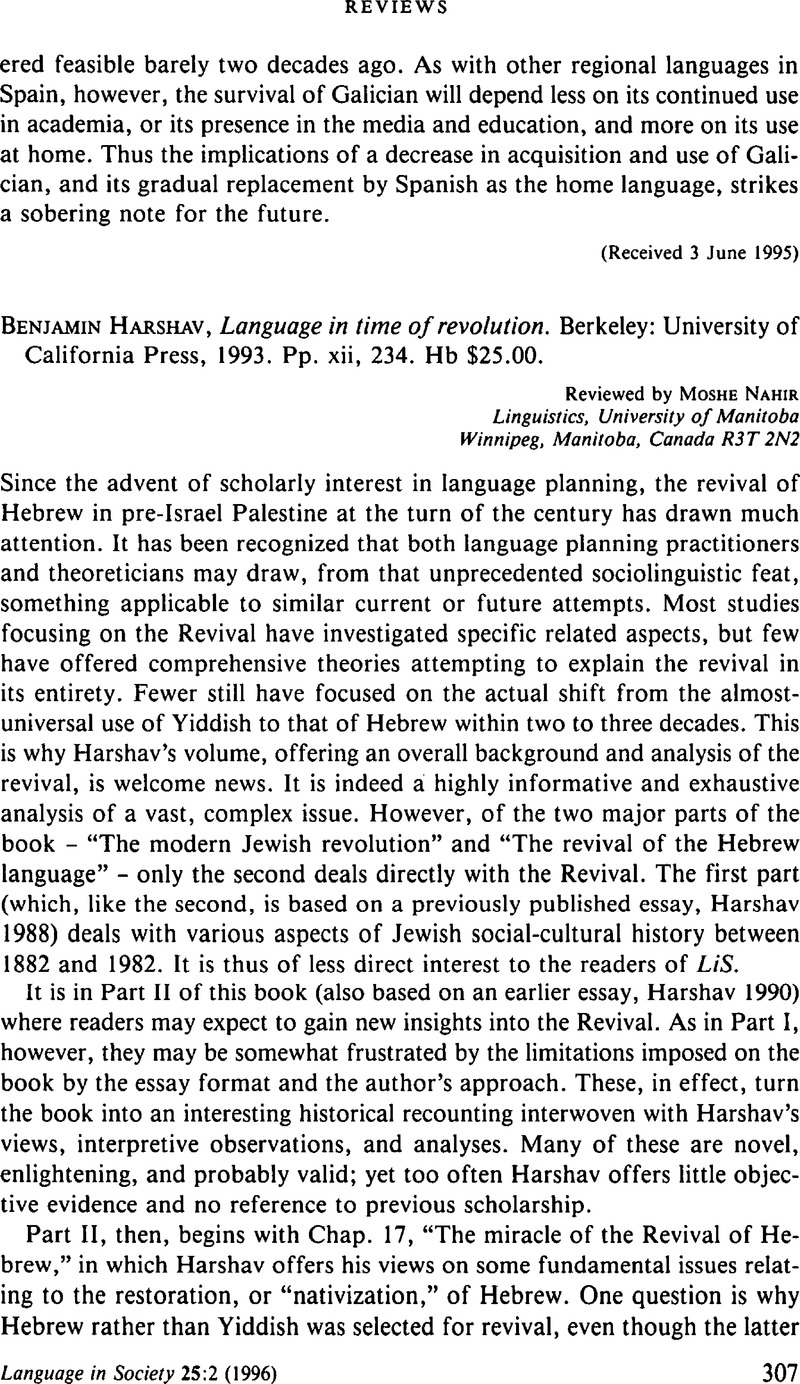Crossref Citations
This article has been cited by the following publications. This list is generated based on data provided by Crossref.
Nahir, Moshe
1998.
Micro language planning and the revival of Hebrew: A schematic framework.
Language in Society,
Vol. 27,
Issue. 3,
p.
335.



